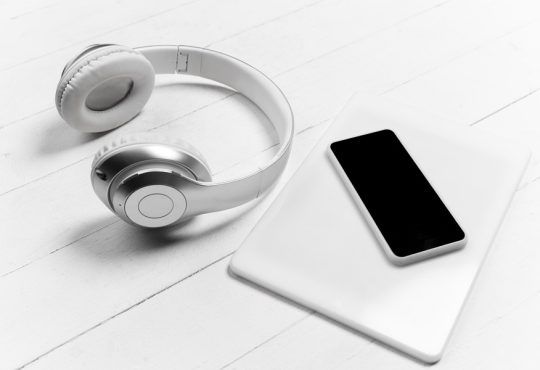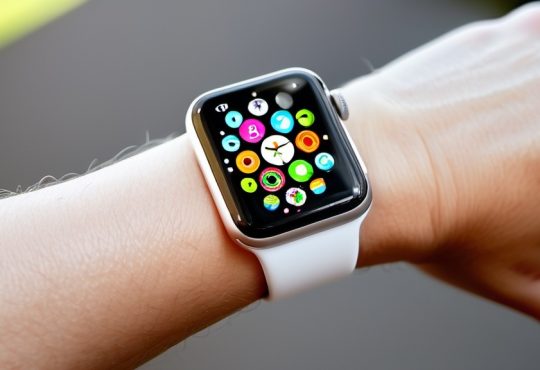E-readers have become indispensable tools for book lovers, providing access to thousands of books at your fingertips while taking up minimal physical space. With many options available in the market, selecting the right e-reader for your needs can be a daunting task. However, by focusing on specific factors like your reading habits, the type of screen, battery life, and ecosystem preferences, you can find the perfect device that fits your lifestyle. In this article, we’ll break down the essential features you need to consider when choosing the best e-reader for your needs.
Understand Your Reading Habits
The first step in selecting the right e-reader is understanding your reading habits. How often do you read? What type of content do you prefer? Do you read fiction, non-fiction, magazines, or comics? These questions can greatly influence the kind of e-reader you should consider.
If you’re an avid reader who spends hours each day engrossed in a good book, you’ll want an e-reader that offers a comfortable reading experience. E-ink displays, for example, are designed to mimic the appearance of paper, which reduces eye strain, even after extended reading sessions. On the other hand, if you read occasionally or mainly use your device for other activities like browsing the internet or watching videos, a tablet with an LCD screen may be a better fit.
The type of content you consume also plays a role. For example, if you enjoy graphic novels or magazines, you might prefer an e-reader that offers full-color support and has a larger screen. Devices like the Amazon Kindle and Kobo have extensive libraries for books, but their compatibility with formats like PDFs or ePub files can differ, so you’ll want to consider your preferred content format as well.
Additionally, consider whether you want to be tied to a specific ecosystem. The Amazon Kindle, for example, gives you access to the extensive Kindle store, including features like Kindle Unlimited. On the other hand, Kobo devices offer a more open approach, with support for a variety of file formats and easy integration with public libraries for eBook borrowing.
Screen Type and Size
The display is one of the most critical components of an e-reader, as it directly impacts your reading comfort. Most e-readers fall into two categories: those with e-ink screens and those with LCD displays. Each type has its advantages and disadvantages, depending on your preferences and reading environment.
1. E-ink Screens
E-ink screens are designed to mimic the appearance of printed paper, making them the ideal choice for long reading sessions. These screens reflect ambient light rather than emitting it, which reduces eye strain and offers a more natural reading experience. They are particularly well-suited for outdoor reading, as e-ink screens are easily visible in direct sunlight. E-ink displays are also known for their energy efficiency, allowing for extended battery life, often lasting several weeks on a single charge.
2. LCD Displays
On the other hand, devices with LCD screens, such as tablets, provide vibrant color displays and backlighting, making them suitable for reading in dimly lit environments. However, LCD screens can cause eye strain over time, especially during extended use, due to the blue light emitted by the display. While these screens are excellent for content that requires color, such as magazines, comics, and videos, they are not as gentle on the eyes for prolonged reading of standard text.
When choosing an e-reader, you’ll also need to consider the size of the screen. Standard e-readers typically have screens ranging from 6 to 7 inches, which strikes a balance between portability and comfortable reading. However, if you prefer larger text or want a device for reading technical documents, newspapers, or graphic novels, you might opt for an e-reader with a larger screen size, such as 8 or 10 inches. Larger screens may enhance readability but can also make the device bulkier and less portable.
Battery Life
Battery life is another important factor when selecting an e-reader, especially if you frequently travel or read on the go. E-ink readers, such as the Kindle Paperwhite or Kobo Clara HD, are known for their impressive battery life. These devices can last for several weeks on a single charge, thanks to the energy-efficient nature of e-ink technology.
If you’re an occasional reader who doesn’t want to worry about constantly recharging your device, an e-ink e-reader is likely the best choice. Most e-ink e-readers use minimal power, as they only consume energy when you turn the page. Additionally, many of these devices have battery-saving features, such as adjustable backlighting and automatic power-saving modes.
In contrast, e-readers with LCD screens, like tablets, tend to have shorter battery lives due to their power-hungry displays. These devices often need to be charged every few days or even daily, depending on usage. If you’re someone who reads for extended periods, especially in places where access to charging may be limited, an e-ink reader is a more convenient option.
Storage Capacity
When considering an e-reader, think about how much storage you’ll need. Most e-readers come with built-in storage, typically ranging from 8GB to 32GB. While this may not seem like much compared to tablets or smartphones, keep in mind that eBooks are relatively small in size. An 8GB e-reader can store thousands of books, making it more than sufficient for the average user.
However, if you plan to store large files, such as PDFs, audiobooks, or graphic novels, you might want to opt for a device with larger storage capacity. Some e-readers also offer expandable storage via microSD cards, allowing you to increase the available space as needed. This is especially useful for those who like to carry an extensive library or store multimedia content.
Additionally, consider whether the e-reader offers cloud storage options. Many devices, such as the Amazon Kindle, allow you to store purchased books in the cloud, freeing up space on your device for other content. This can be particularly useful if you want to access your entire library without worrying about running out of storage.
Ecosystem and File Compatibility
The ecosystem of an e-reader refers to the platform or digital bookstore it’s tied to, which can influence the content available to you and the formats the device supports. When choosing an e-reader, you’ll want to consider the compatibility of the device with your preferred file formats and the type of content you plan to read.
1. Amazon Kindle Ecosystem
Amazon Kindle devices are part of the Kindle ecosystem, which includes the Kindle Store, Kindle Unlimited, and Audible for audiobooks. Kindle supports Amazon’s proprietary AZW and AZW3 formats, as well as MOBI, PDF, and plain text files. However, Kindle devices do not support ePub files, which are the standard format for most eBooks outside of Amazon’s ecosystem. If you plan to purchase most of your eBooks from Amazon or use services like Kindle Unlimited, a Kindle device is a good choice.
2. Kobo Ecosystem
Kobo devices, on the other hand, are known for their openness and compatibility with a wider range of file formats, including ePub, PDF, MOBI, and CBZ for comics. Kobo also integrates with public libraries through OverDrive, allowing you to borrow eBooks for free. If you prefer to source your books from different platforms or borrow from libraries, Kobo offers more flexibility than Kindle.
3. File Transfer and Conversion
If you have an existing library of eBooks in various formats, you may need to consider how easy it is to transfer or convert files. Some e-readers allow you to transfer files via USB or cloud services, while others may require third-party software like Calibre to convert and manage files. Understanding the file compatibility and transfer options of your e-reader can save you time and frustration when setting up your library.
Extra Features
Modern e-readers come with a variety of additional features that can enhance your reading experience, depending on your needs. Here are some extra features to consider:
• Waterproofing: If you like to read by the pool, at the beach, or in the bath, consider an e-reader with waterproofing capabilities. Devices like the Kindle Oasis and Kobo Libra H2O are designed to withstand water exposure, making them ideal for outdoor or vacation reading.
• Audiobook Support: If you enjoy listening to audiobooks, look for an e-reader with built-in audiobook support. Kindle devices, for example, integrate with Audible, allowing you to switch seamlessly between reading and listening. Some devices also come with Bluetooth connectivity for pairing with wireless headphones.
• Adjustable Backlighting: Many e-readers come with adjustable backlighting, allowing you to read in low-light environments without straining your eyes. Some devices even offer warm light settings, which reduce blue light exposure and provide a more comfortable reading experience at night.
• Note-Taking and Annotations: If you like to take notes or highlight passages while reading, consider an e-reader with note-taking capabilities. Some devices offer stylus support, allowing you to annotate documents or make handwritten notes directly on the screen.
Price and Budget
Finally, price is a significant factor in choosing the right e-reader. E-readers can range from budget-friendly options around $100 to premium models that cost over $300. When setting your budget, consider the features that are most important to you and how much you’re willing to invest in a device.
Lower-priced e-readers, such as the basic Kindle or Kobo Nia, offer solid reading experiences with fewer premium features. These devices are perfect for casual readers who want an affordable way to access digital books. On the other hand, higher-end models like the Kindle Oasis or Kobo Forma come with advanced features such as waterproofing, larger screens, and enhanced backlighting. These premium devices are designed for dedicated readers who want the best possible experience.
Additionally, keep in mind the ongoing costs of purchasing books or subscribing to services like Kindle Unlimited or Scrib.





